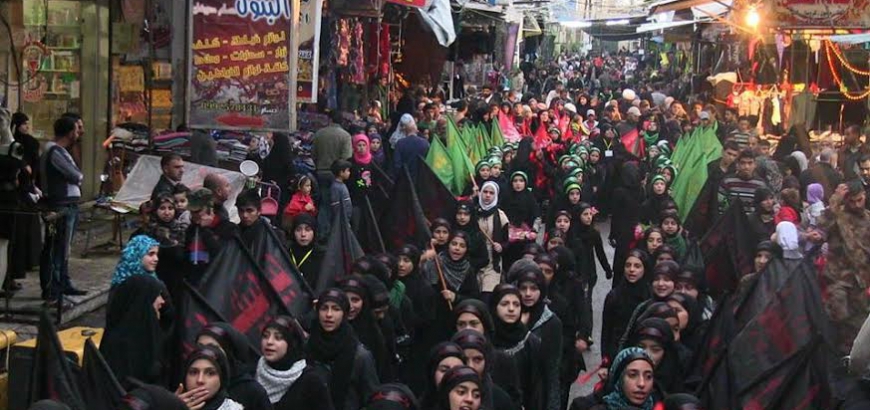It has been three years since Hezbollah took control over the villages and towns of the “Triangle of Death” (where the provinces of the Damascus Countryside, Daraa and Quneitra meet), after the area witnessed fierce fighting at the start of 2015. The Lebanese militia was able to advance toward the opposition forces bases in the western Damascus Countryside, in addition to taking control of the villages of Deir al-Adas and Tel Qerein in the northwestern Daraa countryside — leading to a major wave of displacement from this area and closing off the zone for the militia and Assad regime forces.
At the end of 2016, Hezbollah conflicted a number of times with President Bashar al-Assad’s forces, who participated taking control of this area, leading the commander of the Seventh Brigade at that time to demand that his forces there withdraw to the surrounding military points in the villages, following pressure from an Iranian Revolutionary Guard officer appointed to administer the Brigade’s operations in the city of Al-Sanamyan in northern Daraa.
At the start of 2017, Hezbollah fighters began relocating some of their families to the village of Deir Makar near their center of operations in Tel al-Shaham in the western Damascus countryside. The Hezbollah members are now issuing ownership deeds for the homes which they have settled with the help of the head of the “Saasaa” branch in Quneitra. The branch worked to issue arrest warrants against the owners of these houses on the charge of high treason, as well as confiscating all their properties on behalf of the regime. It then proceeded to deliver these properties to Hezbollah fighters and their families with forged sales contracts.
Abou Rifaat, a resident of the village of Hamriyet in the western Damascus Countryside, told Alsouria Net: “I’ve spent three years of displacement under serious financial pressure. I started to look for one of the residents of my town or the surrounding villages, to sell three dunams [a unit] of land in the village of Hamriyet.”
He added: “After I found someone to buy from me and before writing the sales and purchase contract, he asked for a disclosure of the land size. I sent one of my relatives to go to the land directorate in the Damascus Countryside province and immediately after arriving there, the division employee told him that the land had been sold about a year ago in a public auction to a member of the Lebanese militia Hezbollah.”
The forces of Assad and the Hezbollah militia, with full Iranian backing, have carried out several major attacks on areas in Syria, especially in the Damascus Countryside and Homs, with the aim of expelling the original residents and replacing them with loyalists.
Assad and his allies aim to empty the areas of the Damascus Countryside of the presence of Sunni opposition forces and create a belt around the capital made up of their Alawite and Shiite supporters.
Sources linked to officials in the Assad regime previously told Alsouria Net that the Iranian plan was to create a safe zone of influence free of Sunni presence, especially young men, extending from the Lebanese border west of Syria to Damascus, and east toward the Sayeda Zeinab area.
The sources, who asked not to be named, said that Iran had increased the presence of Shiite families in the areas southeast of Damascus to create a safe line from the Sayeda Zeinab area to the center of the capital. They added that work was underway to penetrate the Sunni areas in southern Damascus through “reconciliation” agreements, “truces” and purchases.
The policy of major demographic change which the Assad regime and Hezbollah are carrying out around Damascus depends on strengthening the sieges on cities and towns under Syrian opposition control in order to force their residents to flee. A large number of people facing siege have been forced to survive by eating tree leaves and grass — leading to a number of deaths in light of the serious medical deficiencies in the absence of doctors and necessary medicine.
The regime has succeeded in imposing a policy of displacement on a number of cities and towns around the capital, especially Zabadani, Madaya, Daraya, Moadhimiyah, Al-Tell, as well as Al-Qadisiyah and Al-Hama in the Damascus Countryside.
This article was translated and edited by The Syrian Observer. Responsibility for the information and views set out in this article lies entirely with the author.


